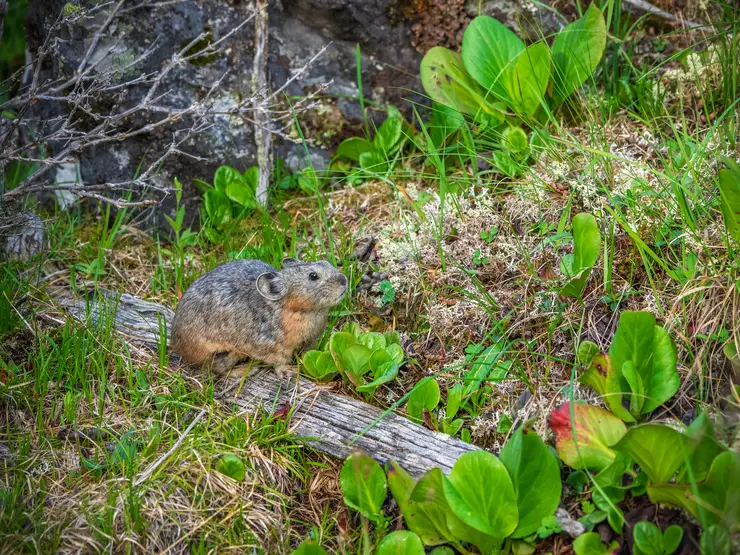No one can deny that the effects of climate change are not just limited to humans; the wildlife, including sea lives, animals, and birds, are also affected by the constant change in temperature. Due to the greenhouse emission, it has become quite unnatural for birds and plants to survive under such harsh conditions. It is also predicted that most of them would become extinct if that constant change remains the same! In order to comprehend how global warming affects animals, we need to understand the latest trends in climate and animals’ responses to these changes.
How Does Global Warming Affect Animals
Major disasters such as floods, droughts, heatwaves and wildfires result from the rapidly increasing temperature. Global warming affects the entire planet, but it is important to realize that all species are losing their habitats. Over 70 different frogs have already become extinct, and many others are also very close to extinction. Animals like polar bears and Penguins, the inhabitants of quickly diminished areas, have become desperate creatures searching for places they can call home.
Effect On Penguins
The International Union of Conservation claims in their study that eleven out of seventeen known species of Penguins are now at the risk of extinction. Emperor and Adelie Penguins are the two most endangered species among the eleven. Although these Penguins are struggling to survive, their chicks are at the most risk.
Emperor Penguin
Emperor Penguins give birth to the chicks on landlocked sea ice. Still, the sea ice is constantly detaching from the mainland due to the dramatic temperature increase in the Antarctic and Arctic peninsula. Since these chicks have not yet developed waterproof features, they are easily prone to be swept away inside the ocean. The constant loss of sea ice is also creating problems for adult emperor penguins to survive.

Adelie Penguin
Unlike emperor penguins, the Adelie penguins do not raise their chicks on the sea ice; rather, they make a nest using pebbles on the small areas in the Arctic shoreline that are not covered with snow. On the western Antarctic Peninsula, however, warmer temperatures allow clouds to hold more moisture for a longer period. This causes it to snow much more heavily when the temperature is finally cold enough to snow.

Effects Of Polar Bear
Just like the Penguins, polar bears also rely on sea ice to survive. Some direct effects from the loss of the sea ice come in the form of reduced ice access to seafood, decreased health, and drought. In 2004, 4 polar bears drowned off the coast of Alaska while trying to reach the sea ice. Issues like this have led to more polar bears leaving the sea ice to live on land.

American Pika
Another endangered animal is the American Pika! This species once lived across the United States and now has already adapted to cold weather. The rise in worldwide temperature has made the Pika retreat up towards peaks. Some live in lower elevations, however, as they can discover caves that are colder than outside.
These animals can die if the temperature goes above 77 degrees Fahrenheit. According to the national wildlife federation, American Pika has completely disappeared in some locations where they used to live. After mild destruction to their habitats in the past, Pika scattered across different mountain ranges. Due to the rising intemperate American Pikas have less space to flee due to the recurring decline of the animal in the Alpine region.

Effect On Aquatic Life
Aquatic life is also in their surviving stage! Shrinking glaciers have decreased the flow of rivers, causing problems for fishes attempting to return from their spawning grounds. While talking about Salmon, they are confronting this decrease in stream flows. And the increasing water temperature. The average water temperature for Salmon is 55 to 64 degrees Fahrenheit. But the recent temperature reaching more than 71 degrees can bring a massive disaster to aquatic life.

Effect On Insects
Another group of animals that are heavily affected by climate change and global warming is insects. One insect in particular that has been affected by the change is the Alpine butterfly. According to the University of Alberta study, the rising tree line in the Canadian Rocky Mountain leads to a local extinction and breeding depression.

Effect On Birds
However, climate change impacts wildlife & biodiversity in numerous ways. Environmentalists have identified changes in their behavior and conduct. For instance, birds lay eggs earlier than expected, plants blossom prior, and vertebrates emerge from hibernation sooner. It does not end here! Animals’ distribution or moving trends are also affected due to the constant rise in global temperature. Birds are moving and showing up at their settling grounds prior, and the settling grounds they are moving to are not as distant as they used to be. The birds don’t live any longer in certain nations, as the environment is reasonably lasting through the year.

Wrap Up
Since the 19th century, the earth’s overall temperature has been gradually changing. If we don’t bother to change our destructive activities, many creations will be on the threshold of disappearance between rising temperature and increasing sea levels. Various species quickly realize they have nowhere to hide. There are more than hundreds if not thousands of other species impacted by global warming. If we don’t do something about it, our lives will be in danger.


